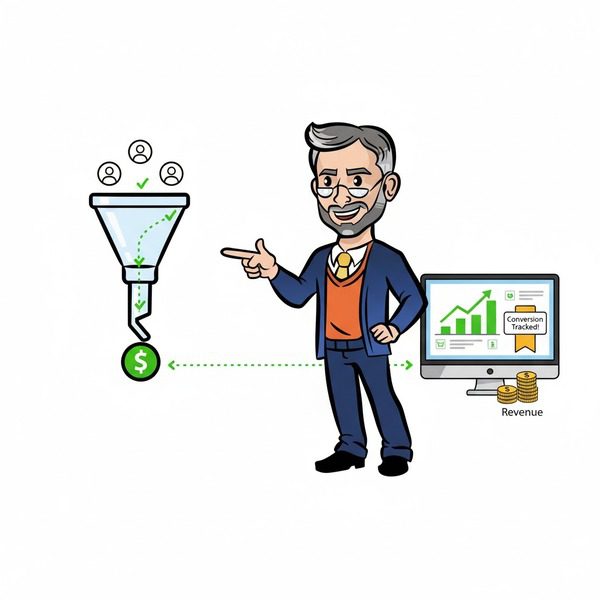
Why Conversion Tracking Matters
Definition: Conversion tracking is one of the most critical tools for any business looking to optimize its digital marketing performance. By monitoring specific user actions—like purchases, form submissions, or sign-ups—conversion tracking provides the data necessary to measure campaign success and guide future decisions.
For startups and growing businesses, conversion tracking turns guesswork into actionable insights. Instead of wondering which ads, pages, or channels are driving results, you’ll have clear, measurable proof of what’s working and where adjustments are needed.
Use It In A Sentence: Thanks to conversion tracking, we know which ads are driving the most sign-ups on our website.
Benefits of Effective Conversion Tracking
- Data-Driven Decision Making: With accurate conversion tracking, businesses can base their strategies on real performance metrics rather than assumptions.
- Optimized Ad Spend: Knowing which campaigns drive conversions allows for smarter allocation of marketing budgets, ensuring every dollar delivers maximum return.
- Improved ROI: Conversion tracking helps identify high-performing channels, ads, and keywords, directly boosting profitability.
- Better Customer Understanding: Tracking conversions across different touchpoints reveals customer behavior patterns, allowing for more tailored messaging and offers.
- Continuous Optimization: With a steady flow of conversion data, businesses can A/B test, refine, and improve campaigns over time to achieve better results.
Key Elements of Conversion Tracking
- Define Clear Goals: Determine what constitutes a conversion for your business—whether it’s a sale, lead, subscription, or other key action.
- Set Up Tracking Pixels & Tags: Use tools like Google Tag Manager, Facebook Pixel, or platform-specific tracking codes to capture conversion data across websites and apps.
- Attribution Modeling: Understand how different channels and touchpoints contribute to conversions, whether it’s first-click, last-click, or multi-touch attribution.
- Cross-Platform Tracking: Ensure conversion tracking is integrated across all digital platforms—social media, search engines, email, and display ads—to capture a complete customer journey.
- CRM Integration: Sync conversion data with your CRM to keep records clean, follow up effectively, and nurture leads based on their interaction history.
- Regular Reporting & Analysis: Continuously review conversion reports to identify trends, uncover drop-off points, and adjust campaigns for ongoing improvement.
- Data Privacy Compliance: Make sure all tracking complies with privacy regulations like GDPR and CCPA, while still collecting the data you need for optimization.
More Definitions
(From the Sales & Marketing Jargon Encyclopedia)
- Cost per acquisition (CPA): A marketing metric that measures how much it costs to gain one new customer or lead through a specific campaign.
Read More> - Customer Onboarding: is the process of guiding new customers through the initial steps of using a product or service to ensure a smooth, successful start and long-term satisfaction.
Read More> - Lifetime Value (LTV): is the total revenue a business can expect to earn from a single customer over the entire duration of their relationship.
Read More> - Customer Insights: Actionable understanding of customer behaviours, preferences, and motivations derived from data and feedback.
Read More>
Useful Posts
(From the Sales Funnel Professor Blog)
- Top of Funnel: Organic Social Strategies: Learn how to build brand awareness using unpaid social media content and outreach.
Read More> - SEO Top of Funnel Strategies: Dive into organic tactics that increase visibility at the awareness stage without a paid budget.
Read More> - How to Find Low-Hanging Fruit in Sales & Marketing: Discover practical ways to identify quick wins and easy-to-implement strategies that don’t require a big spend.
Read More>























